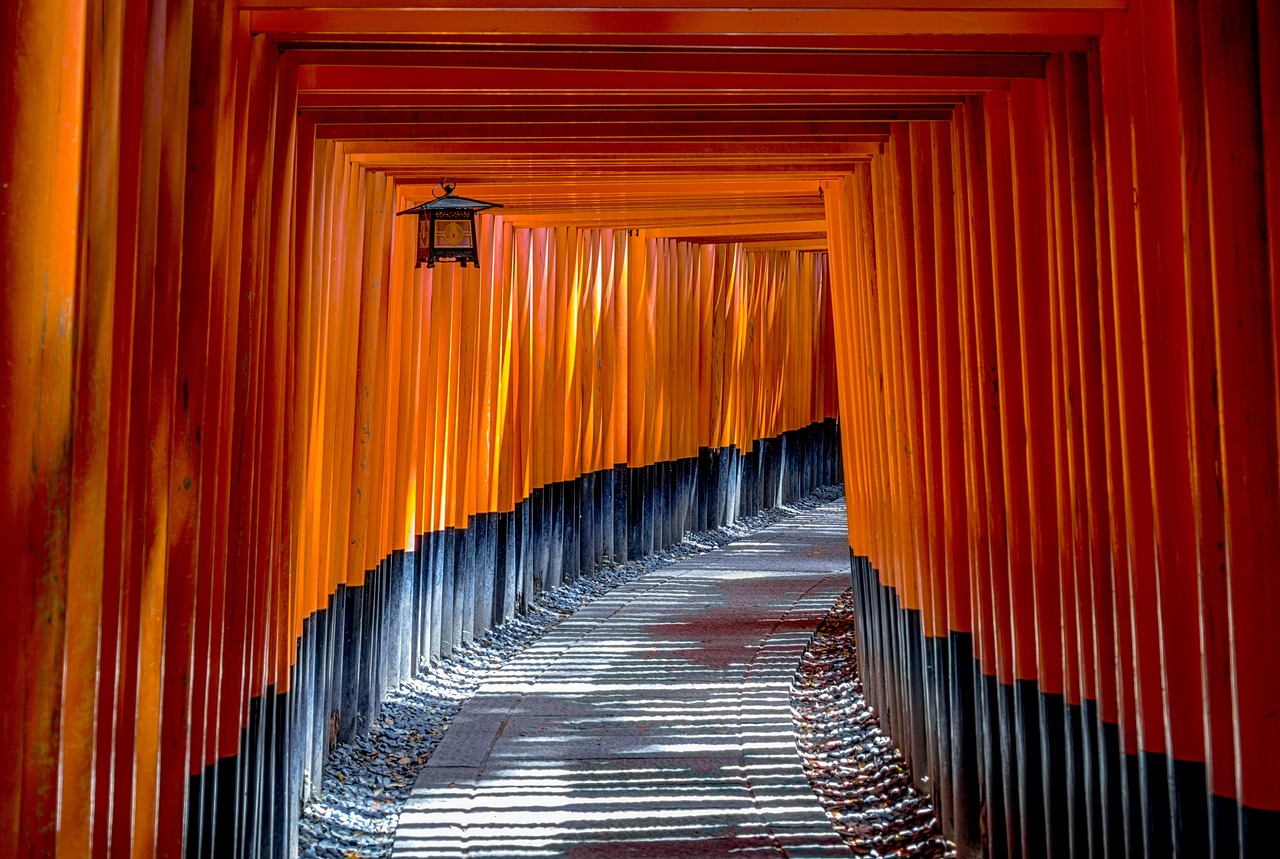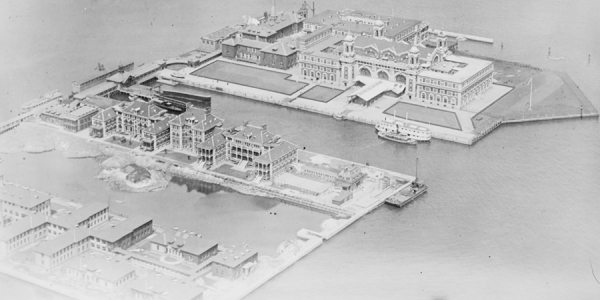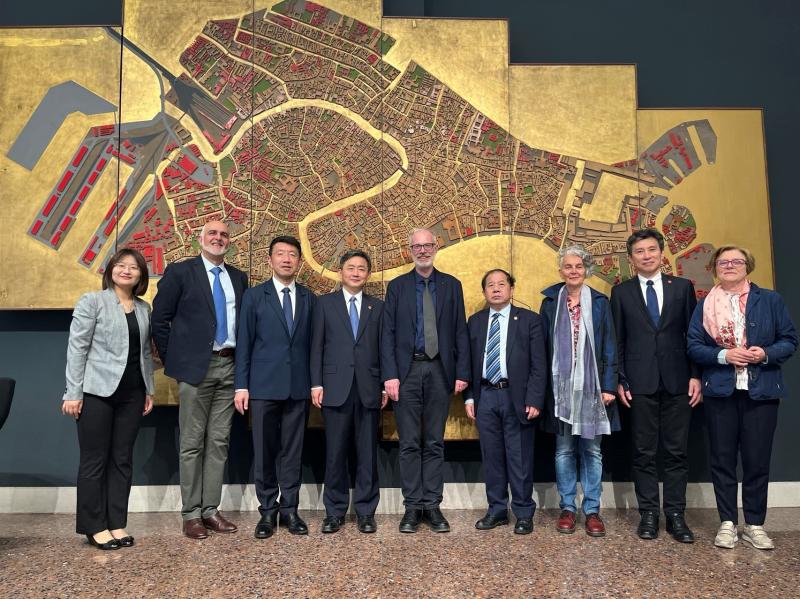Table of Contents
Taking It a Step Further
New York City, often celebrated for its modern skyline and bustling streets, is also a treasure trove of historic sites that offer a glimpse into the city’s rich architectural heritage. Beyond the skyscrapers and contemporary structures, these sites stand as living monuments to the city’s past. In this article, we will embark on a journey through time to explore some of New York’s most iconic historic sites, each with its unique story and architectural significance.
New York City, often celebrated for its modern skyline and bustling streets, is also a treasure trove of historic sites that offer a glimpse into the city’s rich architectural heritage. Beyond the skyscrapers and contemporary structures that define the city’s present, these sites stand as living monuments to its storied past. In this article, we will embark on a captivating journey through time to explore some of New York’s most iconic historic sites, each with its unique story and architectural significance.
**1. The Statue of Liberty: We begin our journey with one of the most universally recognized symbols of freedom and democracy. Standing tall in the New York Harbor, the Statue of Liberty was a gift from France to the United States in 1886. Designed by Frédéric Auguste Bartholdi, this colossal copper sculpture has welcomed millions of immigrants to America, symbolizing hope and the promise of a new life.
**2. Ellis Island: Located nearby, Ellis Island was the gateway to America for over 12 million immigrants between 1892 and 1954. The Ellis Island National Museum of Immigration now occupies the historic immigration station, providing visitors with a deep understanding of the immigrant experience and its role in shaping the nation.
**3. The Flatiron Building: As we venture into the heart of Manhattan, we encounter the Flatiron Building, an iconic triangular-shaped skyscraper completed in 1902. Its innovative design by Daniel Burnham remains a testament to the city’s architectural innovation at the turn of the 20th century.
**4. St. Patrick’s Cathedral: Moving up Fifth Avenue, we find St. Patrick’s Cathedral, a neo-Gothic masterpiece completed in 1878. Its stunning architecture and intricate stained glass windows make it a spiritual and artistic sanctuary in the midst of the urban landscape.
**5. The Woolworth Building: Continuing our architectural exploration, we admire the Woolworth Building, completed in 1913. This neo-Gothic skyscraper was once the tallest building in the world and is renowned for its ornate detailing and stunning lobby.
**6. The Brooklyn Bridge: A short journey across the East River takes us to the Brooklyn Bridge, an engineering marvel that connects Manhattan and Brooklyn. Completed in 1883, it’s not only an iconic suspension bridge but also a testament to the city’s ambition and innovation.
**7. The Tenement Museum: Our journey concludes on the Lower East Side with the Tenement Museum. This immersive museum provides a glimpse into the lives of immigrants in the late 19th and early 20th centuries, showcasing the tenement buildings that housed generations of newcomers.
These historic sites, each with its unique character and historical significance, offer a fascinating window into the soul of New York City. They remind us that amidst the constant evolution and modernization, the city’s architectural heritage and the stories it tells remain invaluable treasures to be cherished and celebrated.
For a comprehensive look at this subject, we invite you to read more on this dedicated page: 12 Can’t Miss Buildings in Downtown Chicago to Explore | Choose …

Statue of Liberty
The Statue of Liberty, gifted by the people of France to the United States in 1886, is not only a symbol of freedom but also a marvel of art and engineering. Designed by Frédéric Auguste Bartholdi, this colossal neoclassical sculpture stands on Liberty Island, welcoming immigrants and visitors alike. Its intricate copper skin and towering pedestal showcase the artistry of the 19th century.
The Statue of Liberty, gifted by the people of France to the United States in 1886, is not only a symbol of freedom but also a marvel of art and engineering that embodies the enduring spirit of democracy. Designed by the visionary French sculptor Frédéric Auguste Bartholdi, this colossal neoclassical sculpture stands as a universal symbol of hope and liberty on Liberty Island, where it extends a warm welcome to immigrants and visitors from around the world.
A Monumental Vision
Bartholdi’s vision for the Statue of Liberty was inspired by his passion for liberty and democracy. The statue’s design blends elements of neoclassical art with symbolic imagery, creating a powerful representation of freedom. Standing at a towering 151 feet and 1 inch, it held the title of the world’s tallest iron statue at the time of its unveiling.
The Intricate Copper Skin
One of the most striking features of the Statue of Liberty is its intricate copper skin, which gives the monument its iconic greenish-blue hue. The copper sheets, less than 3/32 of an inch thick, were carefully hammered and shaped to create the statue’s flowing robes and radiant crown. Over time, exposure to the elements caused the copper to develop its distinctive patina, adding to the statue’s unique character.
The Pedestal: A Symbolic Foundation
The statue’s pedestal, designed by American architect Richard Morris Hunt, is a masterful work of engineering in its own right. Built from concrete and granite, it not only supports the colossal statue but also carries its own symbolic weight. The pedestal features a series of plaques and inscriptions, including the famous lines from Emma Lazarus’s poem “The New Colossus,” which famously begins with “Give me your tired, your poor, your huddled masses yearning to breathe free…”
The Torch of Enlightenment
Perhaps one of the most iconic elements of the Statue of Liberty is the torch held high in her right hand. Symbolizing enlightenment and the path to liberty, the torch originally contained a functioning light, which was replaced with a gold-plated flame in the 1980s. The torch’s golden glow adds a sense of warmth and hope to the statue’s presence in the New York Harbor.
A Beacon of Freedom
Over the years, the Statue of Liberty has become much more than just a symbol. It has served as a welcoming sight for countless immigrants, many of whom arrived at nearby Ellis Island seeking a new life in the United States. The statue’s enduring message of freedom and opportunity continues to resonate with people worldwide, reminding us all of the values that make America a beacon of hope.
In conclusion, the Statue of Liberty is not only an artistic masterpiece but a profound testament to the enduring principles of democracy and freedom. Its intricate design, copper skin, towering pedestal and symbolic torch all come together to tell a story of inspiration, aspiration and the universal yearning for liberty. As visitors approach Liberty Island, they can’t help but be moved by the majesty of this remarkable sculpture, which stands as a powerful symbol of America’s enduring commitment to the ideals of liberty and justice for all.
Don’t stop here; you can continue your exploration by following this link for more details: Statue Of Liberty National Monument (U.S. National Park Service)

Ellis Island
Adjacent to the Statue of Liberty, Ellis Island is another historic gem. It served as the primary immigrant processing station in the United States from 1892 to 1954. The main building, now the Ellis Island National Museum of Immigration, features beautiful Beaux-Arts architecture. Visitors can walk through the same halls where millions of immigrants entered the country, making it a poignant and significant historical site.
Adjacent to the Statue of Liberty, Ellis Island stands as another cherished jewel in America’s historical crown. This small island in New York Harbor carries profound significance as it served as the primary gateway for millions of immigrants seeking a better life in the United States from 1892 to 1954. Ellis Island is not just a place but a testament to the immigrant experience and the rich tapestry of stories that have shaped America.
At the heart of Ellis Island is its magnificent main building, a masterpiece of Beaux-Arts architecture that exudes elegance and grandeur. This iconic structure has been meticulously preserved and transformed into the Ellis Island National Museum of Immigration, where visitors can step back in time and immerse themselves in the journeys of those who crossed oceans in pursuit of the American dream.
Walking through the hallowed halls of the museum, you can’t help but feel the weight of history. The echoing footsteps of countless immigrants who once passed through these very corridors resonate with every visitor. The museum’s exhibits vividly portray the trials and tribulations faced by newcomers, from the arduous voyage across the Atlantic to the daunting medical and legal inspections upon arrival.
One of the most poignant and memorable experiences is encountering the American Immigrant Wall of Honor, a tribute to those who have contributed to the American story. Here, you can search for the names of your own ancestors or discover the remarkable contributions of immigrants from all walks of life who have enriched the nation’s cultural, scientific and entrepreneurial landscape.
Ellis Island isn’t just a historical relic; it’s a testament to the enduring spirit of hope, resilience and diversity that continues to define the United States. It’s a place where visitors can gain a deep appreciation for the courage and tenacity of those who embarked on a journey into the unknown, laying the foundation for the multicultural mosaic that is America today.
In visiting Ellis Island, you not only pay homage to the immigrant experience but also gain a profound understanding of the values that have shaped the United States. It’s a reminder that, at its core, America is a nation built by and for immigrants, a land of opportunity and a beacon of hope for people from all corners of the globe.
To expand your knowledge on this subject, make sure to read on at this location: New York City Walking Tours with Local Experts | Context Private …

Brooklyn Bridge
The Brooklyn Bridge, completed in 1883, is an engineering marvel and an enduring symbol of the city. Designed by John A. Roebling and completed by his son, Washington Roebling, it was the world’s first steel suspension bridge. Its neo-Gothic towers and graceful curves make it an iconic piece of New York’s architectural heritage.
“The Brooklyn Bridge, completed in 1883, is an engineering marvel and an enduring symbol of the city. Designed by John A. Roebling and completed by his son, Washington Roebling, it was the world’s first steel suspension bridge. Its neo-Gothic towers and graceful curves make it an iconic piece of New York’s architectural heritage.
Standing proudly over the East River, the Brooklyn Bridge is more than just a bridge; it’s a testament to human ingenuity and perseverance. Its construction was a monumental feat of engineering in the late 19th century, representing a bold leap forward in bridge design and construction techniques. The use of steel cables and suspension technology allowed the bridge to span a remarkable distance, connecting Manhattan and Brooklyn like never before.
Beyond its engineering significance, the Brooklyn Bridge has woven itself into the cultural fabric of New York City. It has been featured in countless films, literature and art, becoming a symbol of connection and aspiration. The bridge’s soaring towers and delicate stone filigree create a dramatic silhouette against the city skyline, especially when illuminated at night. Walking or biking across its wooden planks offers breathtaking panoramic views of Manhattan, Brooklyn and the Statue of Liberty.
The Brooklyn Bridge has also played a pivotal role in the city’s history. It facilitated the growth of Brooklyn, transforming it from an independent city into one of New York’s five boroughs. It has witnessed parades, protests and iconic moments in the city’s evolution, including welcoming millions of immigrants to the United States as they arrived at Ellis Island.
Today, the Brooklyn Bridge stands as a living monument to the enduring spirit of innovation, artistry and connectivity that defines New York City. It continues to inspire and captivate residents and visitors alike, reminding us that, in this bustling metropolis, the past and the future are intertwined in the most remarkable ways. The Brooklyn Bridge is not just a bridge; it’s a bridge to the city’s rich history, an emblem of its boundless ambition and a timeless work of art that will continue to span generations.”
If you’d like to dive deeper into this subject, there’s more to discover on this page: LPC Makes Data On All Historic Buildings More Accessible With …

Trinity Church
Located in the Financial District, Trinity Church is an architectural masterpiece. The original church, built in 1697, was destroyed in a fire. The current neo-Gothic structure, designed by Richard Upjohn, dates back to 1846 and is known for its stunning stained glass windows, intricate stonework and serene churchyard, where notable historical figures are buried.
Nestled in the heart of the Financial District, Trinity Church stands as both a testament to New York City’s rich history and an architectural masterpiece that continues to inspire awe and reverence. With roots that stretch back centuries, this sacred site is a treasure trove of historical significance and artistic grandeur.
Timeless Elegance: Trinity Church’s architectural journey is a story of resilience and renewal. The original church, built in 1697, bore witness to the city’s early years but tragically succumbed to a devastating fire. In its place, the current neo-Gothic structure, designed by the renowned architect Richard Upjohn, emerged in 1846. This remarkable building, with its soaring spire and intricate stonework, has since become an enduring symbol of New York’s architectural heritage.
Stained Glass Marvels: One of the most captivating features of Trinity Church is its stunning stained glass windows. These masterpieces of art and craftsmanship fill the interior with a kaleidoscope of color and light, creating a spiritual and contemplative atmosphere. They depict biblical scenes, saints and religious motifs, inviting visitors to reflect on the interplay of faith and artistry.
Churchyard of History: Trinity Church’s significance extends beyond its walls to its serene churchyard, where history comes alive. This sacred resting place is the final resting ground for many notable historical figures, including Alexander Hamilton, one of America’s Founding Fathers and Albert Gallatin, the longest-serving U.S. Secretary of the Treasury. Their tombstones and memorials stand as silent witnesses to the nation’s formative years.
Community and Worship: Beyond its historical importance and architectural splendor, Trinity Church remains an active center of worship and community engagement. It continues to serve as a place of solace and spiritual nourishment for both residents and visitors. The tolling of its bells and the resonance of its organ music offer moments of reflection amid the bustling Financial District.
A Living Legacy: Trinity Church’s legacy extends beyond its walls, as it actively participates in philanthropic endeavors and community outreach. Its commitment to social justice and humanitarian causes exemplifies its enduring role as a beacon of hope and compassion in the heart of the city.
Cultural Treasure: In a city known for its skyscrapers and modernity, Trinity Church stands as a cultural treasure, preserving the elegance and grace of a bygone era. It invites all who pass through its doors to connect with the past, find solace in the present and contemplate the future.
Visiting Trinity Church is not merely a journey through time; it is an encounter with the profound intersection of faith, history and artistry. Its neo-Gothic spire reaches toward the heavens and its walls whisper tales of a city’s evolution. Trinity Church remains a sanctuary of contemplation, an architectural gem and a living testament to the enduring spirit of New York City.
Looking for more insights? You’ll find them right here in our extended coverage: 10 Best Things to Do in Old Québec City | Visit Québec City

St. Patrick’s Cathedral
This neo-Gothic masterpiece on Fifth Avenue is one of the most famous Catholic cathedrals in the United States. Completed in 1878, it boasts stunning architecture and intricate decorative details. Visitors can admire the cathedral’s stunning façade, stained glass windows and awe-inspiring interior, which has hosted many significant events and ceremonies over the years.
This neo-Gothic masterpiece on Fifth Avenue is not just one of the most famous Catholic cathedrals in the United States; it’s a timeless testament to architectural grandeur and spiritual significance. Completed in 1878, this cathedral stands as a beacon of faith, artistry and history, drawing visitors from across the globe to bask in its splendor and significance.
Awe-Inspiring Architecture: The cathedral’s architecture is a marvel that transports visitors to another era. Its neo-Gothic style pays homage to the great cathedrals of Europe, with towering spires, intricate stonework and ornate façades that exude a sense of otherworldly beauty. As you approach the cathedral, the sheer scale of its design commands reverence, inspiring a sense of humility in the face of human achievement.
Intricate Decorative Details: A closer look reveals a world of intricate decorative details that adorn both the exterior and interior. Delicate stone carvings, elaborate reliefs and sculptures that breathe life into biblical narratives grace the cathedral’s façade. These details are a testament to the craftsmanship of the artists who dedicated their skills to creating a place of unparalleled beauty and spiritual significance.
Stained Glass Splendor: The cathedral’s stained glass windows are a sight to behold, with their kaleidoscope of colors casting a gentle glow across the interior. Each window tells a story, capturing the essence of religious narratives and inviting contemplation. These windows are not just works of art but also conduits for natural light that infuse the space with an ethereal quality.
Historic Significance: Over the years, this cathedral has witnessed and hosted countless significant events and ceremonies. It has been the backdrop for religious rites, grand celebrations and historic gatherings. Its hallowed halls have echoed with the prayers and voices of countless faithful, dignitaries and visitors alike.
Spiritual Sanctuary: Beyond its architectural and artistic magnificence, this cathedral serves as a spiritual sanctuary, offering solace, reflection and inspiration to all who enter. Whether you come seeking a moment of quiet contemplation, attending a special service or simply marveling at its beauty, the cathedral provides a space where the spiritual and the aesthetic converge.
A Living Legacy: This cathedral’s legacy extends beyond its physical presence. It embodies the enduring spirit of faith and creativity that has shaped the city and the nation. It stands as a testament to the enduring power of human aspiration, a symbol of the heights we can achieve when we combine faith, artistry and dedication.
In conclusion, this neo-Gothic masterpiece on Fifth Avenue is more than just a cathedral; it’s a living testament to the profound impact of architecture, art and faith on the human spirit. As you step inside its majestic doors or marvel at its exterior, you become part of a legacy that spans generations, a testament to the enduring quest for beauty, spirituality and the sublime. It is a place where history, art and faith converge, inviting all who enter to experience a sense of wonder and awe that transcends time and place.
You can also read more about this here: Glimpses of Old New York | The Metropolitan Museum of Art

Flatiron Building
The Flatiron Building, completed in 1902, is a distinctive triangular-shaped skyscraper that stands as a testament to New York’s architectural innovation. Its Beaux-Arts design and steel frame construction were groundbreaking at the time and it continues to captivate admirers today.
“The Flatiron Building, a true architectural marvel, stands as a timeless testament to New York City’s relentless spirit of innovation and artistic vision. Completed in 1902, this distinctive triangular-shaped skyscraper emerged as an iconic symbol of the city’s ever-evolving skyline. Its Beaux-Arts design, characterized by ornate detailing and classical motifs, combined with its pioneering steel frame construction, marked a groundbreaking moment in the history of architecture.
In its early days, the Flatiron Building was a sensation, capturing the imagination of New Yorkers and visitors alike. Its slender form, soaring 285 feet into the sky, defied convention and set the stage for a new era of skyscraper design. It became a symbol of progress and modernity, embodying the dynamic spirit of the city it called home.
Over a century later, the Flatiron Building’s allure remains undiminished. It continues to captivate admirers from around the world, drawing photographers, artists and architectural enthusiasts to its distinctive silhouette. Standing at the intersection of Broadway and Fifth Avenue, it not only represents architectural innovation but also serves as a reminder of New York City’s enduring commitment to pushing the boundaries of design and creativity.
As you stand before this historic structure, you can’t help but be transported back in time, imagining the bustling streets of early 20th-century New York. The Flatiron Building, with its timeless beauty and enduring charm, stands as a living testament to the city’s ability to combine the old and the new, the historic and the contemporary, all in one magnificent architectural masterpiece.”
For a comprehensive look at this subject, we invite you to read more on this dedicated page: Flatiron Building Tours and Info | NYC Attractions – USA Guided Tours

Taking It a Step Further
New York City’s historic sites are more than just bricks and mortar; they are living witnesses to the city’s evolution over the centuries. Each site tells a unique story, reflecting the architectural, cultural and historical diversity of the city. Exploring these sites not only offers a glimpse into the past but also fosters an appreciation for the enduring legacy of New York’s architectural heritage. Whether you’re a resident or a visitor, these historic sites provide an opportunity to connect with the city’s rich history and its enduring commitment to preserving its architectural treasures.
New York City’s historic sites are more than just bricks and mortar; they are living witnesses to the city’s evolution over the centuries. Each site tells a unique story, reflecting the architectural, cultural and historical diversity of the city. From the iconic landmarks like the Statue of Liberty and Ellis Island, which welcomed generations of immigrants, to the hidden gems nestled in neighborhoods, these sites offer a multi-layered tapestry of the city’s past.
Exploring these historic sites is like stepping into a time machine, where you can experience the grandeur of the Gilded Age in places like the Vanderbilt Mansion or walk through the tenements of the Lower East Side, which stand as a testament to the struggles and triumphs of the immigrant experience.
But these sites are not frozen in time; they are dynamic, hosting events, exhibitions and educational programs that bring history to life. Whether you’re gazing at the art collections at the Metropolitan Museum of Art, attending a reenactment at a colonial-era house or learning about the Civil Rights Movement at the African Burial Ground National Monument, you’re immersing yourself in the rich tapestry of New York’s past and present.
Exploring these historic sites not only offers a glimpse into the past but also fosters an appreciation for the enduring legacy of New York’s architectural heritage. It reminds us of the city’s resilience in the face of change and its commitment to preserving the treasures that make it unique. Whether you’re a resident seeking to deepen your connection to the city’s roots or a visitor eager to discover its history, these historic sites provide a powerful and enriching experience that transcends time and place.
Looking for more insights? You’ll find them right here in our extended coverage: 21 Top Sites in London for History Lovers – Context Travel

More links
For additional details, consider exploring the related content available here Exploring 2,500 Years of Architectural Heritage in Guatemala …
